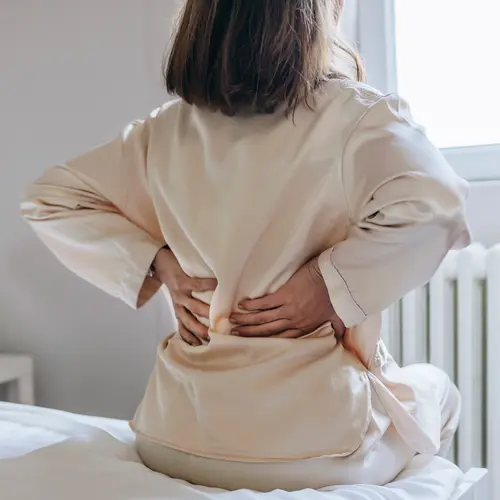If you have osteoporosis, exercising is crucial for keeping your bones strong.
The condition means the mass and density of your bones, or your bone mass, are lower than they should be. That puts you at a higher risk for fractures, especially in your hips and spine. But some exercises, like walking and resistance exercises, can help strengthen your bones and may slow bone loss. Exercise can build up your muscles and improve your balance, too. Together, those things help lower your odds of falling and fracturing a bone, allowing you to stay active and healthy longer.
Here’s what you need to know about exercising safely when you have osteoporosis.
What Kind of Exercise Is Best for Osteoporosis?
The best kind is something you enjoy and are willing to do regularly. But when it comes to osteoporosis, certain forms of movement are especially helpful. These include:
Weight-bearing aerobic exercise. These workouts, like walking or climbing stairs, make your bones work harder than normal movements to support your body weight. That work helps strengthen them and slow bone loss.
Some weight-bearing workouts, like jogging, hiking, and playing tennis, put more stress on your bones and joints than other types. Experts call them high-impact exercises. If you’ve already had a fracture due to osteoporosis or you’re at risk for one, you may need to avoid these high-impact workouts.
Other aerobic exercises, like swimming, water aerobics, using the elliptical machine, and biking, aren’t as effective at strengthening bones, but they are great low-impact options for people who can’t do high-impact, weight-bearing activity.
Strength training (aka resistance training). You use weights, resistance bands, or your own body weight to strengthen your muscles. That’s important, because strong muscles -- especially near your spine -- can help protect your bones. But strength training also puts pressure on your bones. That helps build and maintain bone mass.
It’s a good idea to ask a physical therapist or certified personal trainer to help you create a strength training workout that’s safe and tailored to your needs. If you don’t want to go into a gym or physical therapy office, some experts may be able to help you through video calls.
Flexibility, stability, and balance exercises. Though they don’t maintain bone mass the same way that weight-bearing aerobic exercise and strength training do, moves that improve your range of motion and balance can lower your risk of falling. Falls are one of the main ways that people with osteoporosis break their bones. If you’re flexible and have good balance, you’ll also have an easier time getting around and exercising, which can help you stay mobile longer. What’s more, many of these exercises can improve your posture, which can help protect your spine.
Flexibility, stability, and balance exercises include:
- Yoga
- Pilates
- Tai chi
- Stretching
- Simple exercises, like standing on one leg or doing heel dips
Important: Before you do yoga or Pilates, ask your doctor or a physical therapist which exercises you should avoid. Certain motions, such as bending forward, may not be safe for people with osteoporosis or those who are more likely to break a bone. They may raise your risk of a spine fracture.
Before You Start a New Exercise Routine
It’s important to talk to your doctor before starting a new type of workout, even if you’ve done the same kind of exercise in the past. Your doctor may recommend you get tests, like a bone density measurement, before you begin.
It’s just as important to listen to your body during and after exercise. Mild soreness for up to 2 days after exercise is normal. But sharp or severe pain isn’t and is a sign you should stop doing what you’re doing. If the pain doesn’t stop when you stop exercising, call your doctor or go to the emergency room.

